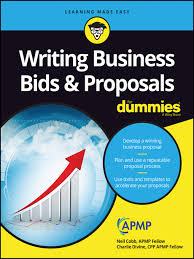This white paper outlines a strategic approach to sourcing IT services and solutions through Request for Proposal (RFP) and Request for Tender (RFT) processes. By effectively crafting and managing these procurement documents, organizations can secure optimal solutions that align with their business objectives, enhance operational efficiency, and mitigate risks.
A Comprehensive Approach to Sourcing IT Services and Solutions
Executive Summary
This white paper outlines a strategic approach to sourcing IT services and solutions through Request for Proposal (RFP) and Request for Tender (RFT) processes. By effectively crafting and managing these procurement documents, organizations can secure optimal solutions that align with their business objectives, enhance operational efficiency, and mitigate risks.
Understanding RFPs and RFTs
Request for Proposal (RFP): An RFP is a formal document used to solicit proposals from potential suppliers or vendors. It outlines the organization's specific requirements, evaluation criteria, and timeline for the desired services or solutions.
Request for Tender (RFT): An RFT is similar to an RFP but is often used for more complex and specialized procurements. It typically involves a detailed technical specification and may require bidders to submit detailed technical proposals and pricing information.
Key Considerations for Crafting Effective RFPs and RFTs
- Clear and Concise Requirements:
- Define Scope: Clearly articulate the scope of the project or service, including specific deliverables, timelines, and performance expectations.
- Identify Key Performance Indicators (KPIs): Establish measurable KPIs to evaluate supplier performance and hold them accountable.
- Specify Technical Requirements: Detail the technical specifications, standards, and compatibility requirements for hardware, software, and infrastructure.
- Rigorous Evaluation Criteria:
- Develop a Scoring Model: Create a weighted scoring model to evaluate proposals based on various factors, such as technical capability, pricing, experience, and proposed solutions.
- Establish Clear Evaluation Criteria: Clearly define the criteria that will be used to assess proposals, ensuring consistency and fairness.
- Comprehensive Contract Terms:
- Protect Organizational Interests: Include detailed terms and conditions, including service level agreements (SLAs), intellectual property rights, and dispute resolution mechanisms.
- Consider Risk Mitigation: Implement risk management strategies, such as insurance requirements, indemnification clauses, and contingency plans.
- Effective Vendor Management:
- Establish a Vendor Management Framework: Develop a robust vendor management framework to monitor supplier performance, address issues, and facilitate collaboration.
- Foster Strong Relationships: Build strong relationships with suppliers to encourage open communication, innovation, and long-term partnerships.
Best Practices for Sourcing IT Services and Solutions
- Conduct Thorough Market Research: Identify potential suppliers and assess their capabilities, reputation, and financial stability.
- Involve Key Stakeholders: Engage relevant stakeholders throughout the procurement process to ensure alignment with business objectives.
- Utilize Standardized Templates: Develop standardized RFP and RFT templates to streamline the process and maintain consistency.
- Provide Clear and Timely Communication: Maintain open and transparent communication with potential suppliers to address questions and concerns promptly.
- Leverage Technology: Utilize procurement software to manage the RFP and RFT process efficiently and track supplier responses.
- Consider a Phased Approach for Complex Projects: Break down complex projects into smaller phases to facilitate procurement and risk management.
References
- Purchasing and Supply Chain Management: A Conceptual Approach by Donald J. Bowersox, David J. Closs, and M. Bixby Cooper
- The Handbook of Procurement: A Guide to Effective Purchasing and Supply Chain Management by John Monczka, Robert Trent, and Robert Handfield
By following these best practices and leveraging the insights provided in this white paper, organizations can successfully navigate the complex landscape of IT services and solutions procurement. Contact keencomputer.com for details.
